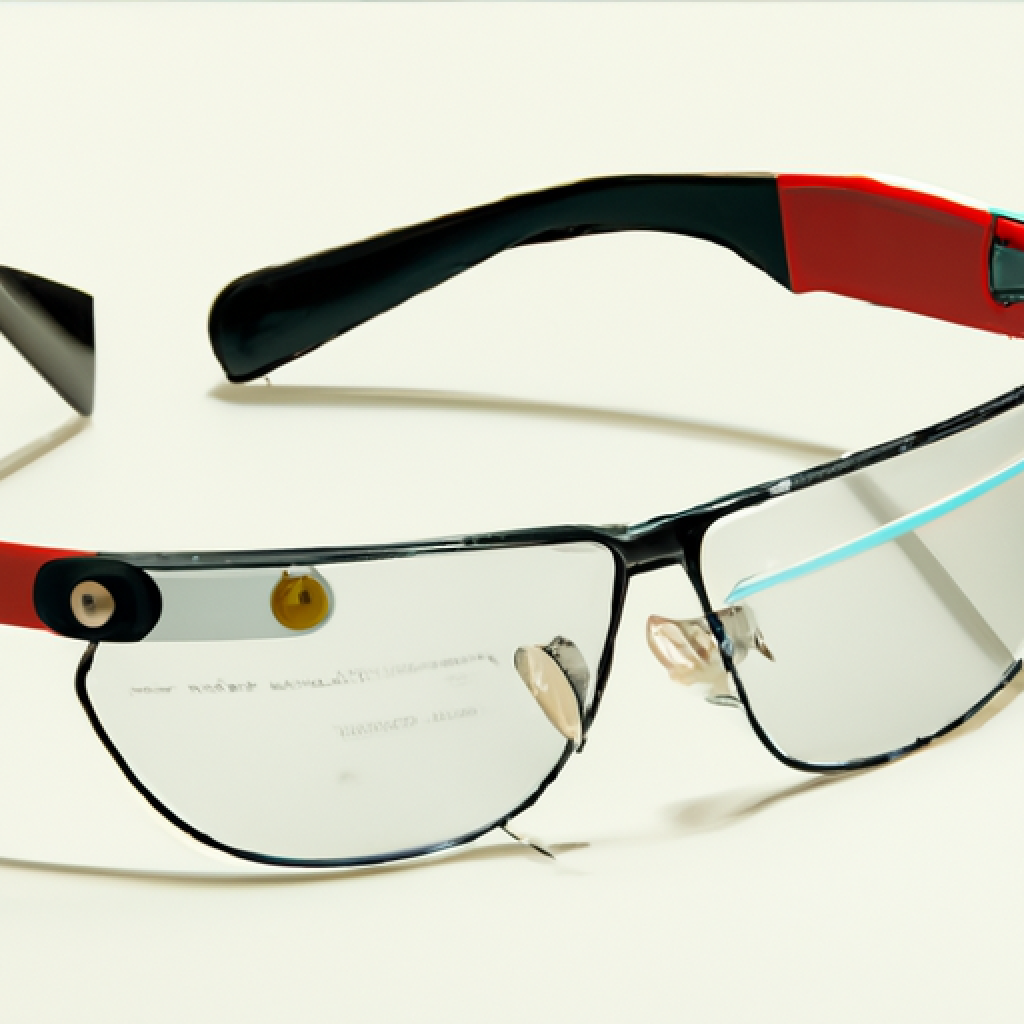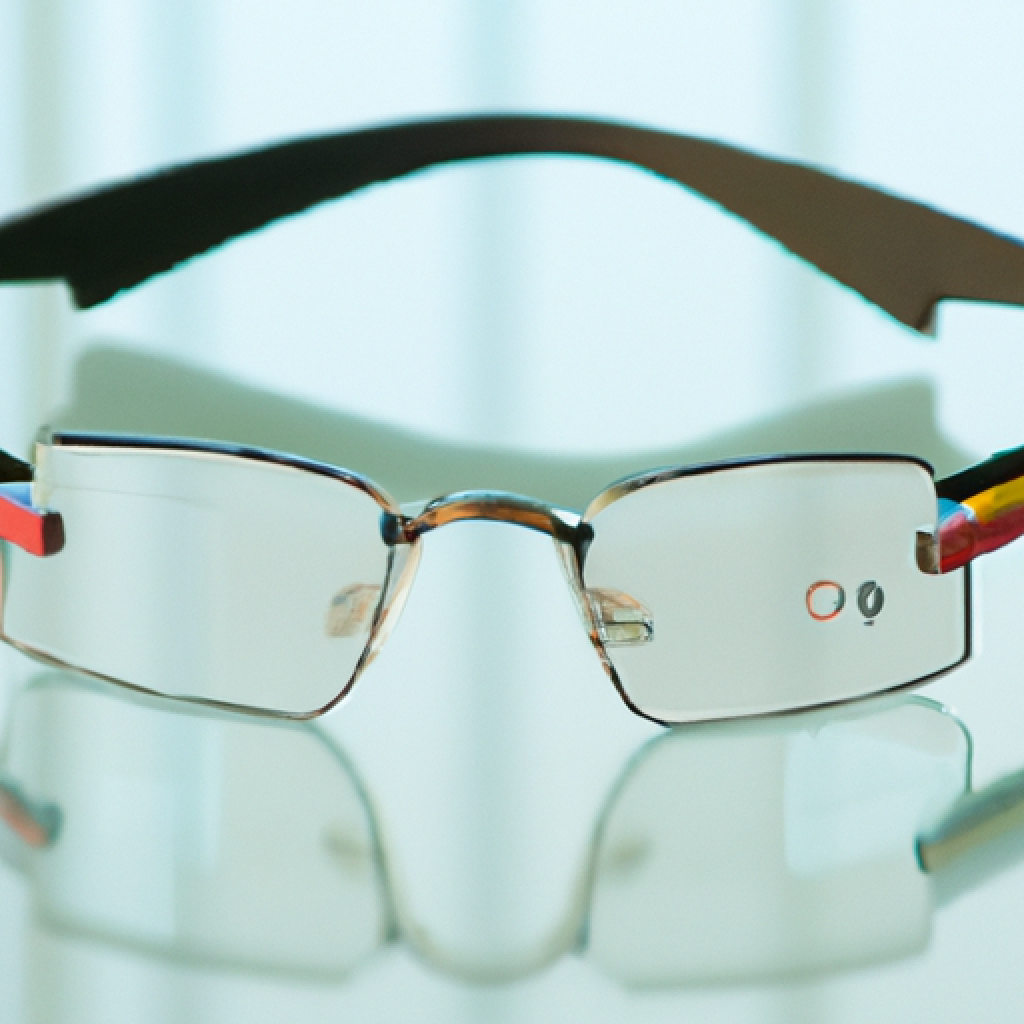Why Did Google Glass Fail?

I’ll never forget the excitement and curiosity that surrounded the release of Google Glass back in 2013. It was supposed to be the next big thing in wearable technology, promising a revolutionary way to interact with the world. Yet, despite all the hype, Google Glass ultimately fell short of its potential. In this article, I’ll explore the key reasons behind its failure and shed light on what lessons can be learned from this ambitious yet flawed endeavor. So, let’s take a closer look at why Google Glass failed to live up to its lofty expectations.
High Purchase Cost
Google Glass faced significant challenges right from the start, with one of the key factors being its high purchase cost. Priced at $1,500, Google Glass was significantly more expensive than other smart devices available in the market at the time. This high price tag made it inaccessible to the average consumer, limiting its potential customer base. Additionally, when comparing the cost of Google Glass to other smart devices such as smartphones and smartwatches, it became clear that the price did not justify the device’s functionality or value.
Pricing of Google Glass
The pricing strategy adopted by Google for its Glass product was a major contributing factor to its downfall. With a hefty price tag of $1,500, Google Glass was positioned as a luxury item rather than an innovative and practical device. This pricing strategy not only alienated potential customers but also raised doubts about the value proposition of the product. Consumers questioned whether the features and functionalities offered by Google Glass were worth the high price they had to pay.
Comparison with other smart devices
When comparing Google Glass to other smart devices available in the market, it became clear that the cost was not justified. Smartphones, for instance, offered a wide range of functionalities at a much lower price point. Users could perform tasks such as browsing the internet, taking photos, and accessing apps on their smartphones, all of which could also be done on Google Glass. However, the cost of Google Glass was significantly higher, making it a less attractive option for consumers.
Impact of cost on consumer preference
The high purchase cost of Google Glass had a significant impact on consumer preference. Many potential users were deterred from purchasing the device due to its unaffordability. The limited target market of wealthy early adopters was not substantial enough to drive widespread adoption. The majority of consumers were not willing to invest such a large sum for a device that did not offer enough practical benefits or justify the price tag. As a result, the high purchase cost of Google Glass hindered its mass-market appeal and ultimately contributed to its failure.
Lack of Practical Use
Another major factor that contributed to the failure of Google Glass was its lack of practical use. While the concept of wearable technology was alluring, Google Glass failed to deliver functionality that justified its existence in the everyday lives of consumers.

Limited functionality
Google Glass was touted as a revolutionary device, but it failed to deliver on its promise of enhanced functionality. The device primarily offered features such as taking photos, recording videos, and displaying notifications. While these capabilities seemed exciting in theory, they did not provide significant value or solve real-world problems for users. The limited functionality offered by Google Glass made it difficult for consumers to justify its use and incorporate it seamlessly into their daily routines.
Difficulties in daily usage
The practicality of Google Glass was further hindered by difficulties in daily usage. The device required users to wear it constantly, which posed challenges in terms of comfort, compatibility with prescription glasses, and social acceptance. Adjusting the device for optimal viewing was also a constant hassle. Moreover, using voice commands or the touchpad for navigation was not always intuitive, leading to frustration and a clunky user experience. These usability issues made it inconvenient and tiresome to use Google Glass on a regular basis, diminishing its appeal to consumers.
Lack of problem-solving capabilities
One of the key shortcomings of Google Glass was its inability to effectively solve real-world problems for users. While the device could provide information and notifications, it failed to offer solutions that significantly improved users’ lives. For example, rather than simply displaying traffic information, Google Glass could have provided real-time alternative route suggestions or integrated with transportation apps for a seamless travel experience. The lack of problem-solving capabilities limited its usefulness and left consumers questioning the true value of the device.
Aesthetic Issues
In addition to the practical shortcomings of Google Glass, the device also faced significant aesthetic issues that contributed to its failure.

Unpopular design
One of the main criticisms Google Glass faced was related to its design. The device was often described as bulky, awkward, and unfashionable. Its distinctive appearance made wearers stand out, leading to social discomfort and a sense of self-consciousness. Unlike traditional eyeglasses or sunglasses, Google Glass did not blend seamlessly into everyday attire, which further hindered its acceptance among the general public. The unpopular design of Google Glass made it less appealing to potential users, who were not willing to sacrifice their style or aesthetics for the sake of wearing the device.
Comfort concerns
Comfort was another key issue that affected the adoption of Google Glass. The device’s weight distribution and fit on the user’s head and nose were often less than ideal, leading to discomfort and pressure points. Extended usage of Google Glass could cause soreness and headaches, making users less inclined to wear the device for extended periods. The discomfort associated with Google Glass added to the list of hindrances that prevented users from incorporating it seamlessly into their daily lives.
Public perception of wearers
The public perception of Google Glass wearers further exacerbated its aesthetic issues. Wearers were often associated with being “tech geeks” or “glassholes,” a term coined to describe individuals who wore Google Glass and exhibited socially inappropriate behavior, such as recording without consent or invading others’ privacy. This negative perception surrounding Google Glass wearers created a stigma and made potential users more hesitant to adopt the device. The combination of an unpopular design, comfort concerns, and public perception ultimately played a significant role in Google Glass’s failure to gain widespread acceptance.
Privacy Concerns
Privacy concerns were another critical factor that contributed to the failure of Google Glass. The device’s potential intrusiveness, public backlash, and legal issues presented significant hurdles for its adoption.

Intrusiveness of the device
Google Glass’s built-in camera and the ability to record videos without easily noticeable indicators raised concerns about privacy and security. The device’s inconspicuous recording capabilities made it difficult for others to know when they were being recorded, leading to discomfort and breaches of privacy for those around the Glass wearer. This intrusiveness was a major point of contention and had a negative impact on the public perception of the device. The potential invasiveness of Google Glass was a significant barrier that prevented it from gaining widespread acceptance.
Public backlash
The privacy concerns surrounding Google Glass resulted in a significant public backlash. Individuals and establishments, including bars, restaurants, and cinemas, started banning the use of Google Glass on their premises. This backlash was driven by concerns about being recorded without consent, as well as the potential for misuse of recorded content. The negative publicity and rejection by various establishments further tarnished the image of Google Glass and limited its acceptance among the general public.
Legal issues and restrictions
The legal landscape surrounding the use of Google Glass was not favorable, contributing to its failure. Concerns about privacy and recording led to legal restrictions and regulations in various jurisdictions. Some countries even went as far as banning the use of Google Glass while driving due to concerns about distracted driving. These legal hurdles and restrictions not only limited the potential usage scenarios for Google Glass but also raised regulatory challenges for Google. The combination of public backlash and legal issues created significant obstacles that Google Glass could not overcome.
Poor Marketing Strategy
The failure of Google Glass can also be attributed, in part, to a poor marketing strategy. Google’s approach to marketing the device lacked clarity, resulted in confusion about the product’s positioning, and failed to effectively target specific user groups.

Confusing product positioning
Google struggled to effectively communicate the purpose and value proposition of Google Glass to consumers. The device was initially introduced as a consumer product, but its high price and limited functionality made it more suitable for business and professional use. However, this shift in positioning was not effectively conveyed to the target audience, leading to confusion and uncertainty about who the product was intended for. The lack of clarity in Google’s product positioning hindered its ability to resonate with potential users and limited its market appeal.
Failure to target specific user groups
The marketing efforts for Google Glass failed to effectively target specific user groups. The initial focus on early adopters and tech enthusiasts limited the potential customer base of the device. Google did not adequately identify and cater to the needs and preferences of different user segments, such as athletes, healthcare professionals, or industrial workers, who could have found practical applications for Google Glass. By failing to tailor its marketing messages and strategies to specific user groups, Google missed opportunities to showcase the device’s potential and create broader market appeal.
Impact of marketing on product image
The marketing approach employed by Google also had a negative impact on the product image. Google Glass was positioned as a luxury item or a fashion statement, rather than a practical and functional device. The emphasis on exclusivity and high price deterred many potential users who were seeking a device that offered true value and utility. The marketing strategy contributed to a perception that Google Glass was more of a gimmick or a novelty item, rather than a device with real-world applications. This misalignment between the marketing messaging and the actual benefits of the device undermined its credibility and hindered its adoption.
Limited App Ecosystem
The success of any smart device heavily relies on the availability of a robust and diverse app ecosystem. Unfortunately, Google Glass suffered from a lack of apps tailored to its platform, which significantly impacted the user experience and adoption of the device.

Lack of apps tailored to Google Glass
Google Glass struggled to attract developers and build a comprehensive app ecosystem. The limited popularity and low adoption rates of the device made it less attractive for developers to invest time and resources into developing apps specifically for Google Glass. As a result, the device lacked a wide range of apps that could fully utilize its capabilities and provide value to users. This lack of tailored apps diminished the overall user experience and limited the device’s potential for broader adoption.
Comparison with app ecosystems of other devices
When compared to the established app ecosystems of smartphones and other smart devices, Google Glass fell short. The app stores for devices like smartphones and tablets are filled with a multitude of apps that cater to various user needs and preferences. Users can find apps for almost any task or activity, ranging from productivity tools to entertainment and lifestyle apps. In contrast, Google Glass had limited app options, restricting its functionality and appeal to users. The lack of a robust app ecosystem made it difficult for Google Glass to compete with other devices that offered a more diverse range of apps.
Effects on user experience
The limited app ecosystem had a significant impact on the overall user experience of Google Glass. Users were unable to fully leverage the device’s capabilities due to the lack of tailored apps. Without a wide range of apps to choose from, Google Glass was unable to provide the seamless integration with users’ digital lives that they had come to expect from other smart devices. This limitation severely hindered the device’s potential and made it less appealing to consumers who were looking for a device that could enhance their productivity or offer unique experiences.
Technological Limitations
Google Glass faced several technological limitations that contributed to its failure. From battery life issues to problems with display quality and hardware/software challenges, these limitations hindered the device’s performance and overall user experience.
Battery life issues
One of the most significant technological limitations of Google Glass was its poor battery life. The device’s battery could not sustain extensive usage, especially when running power-intensive apps or recording videos. Users had to constantly worry about running out of battery and needed to carry charging accessories or find power sources to keep the device usable throughout the day. The limited battery life severely hampered the practicality and convenience of Google Glass, making it less desirable for users who required longer usage periods without interruptions.
Problems with display quality
The display quality of Google Glass was another area of concern. The device featured a small display positioned above the user’s line of sight, which projected information directly onto the wearer’s eye. However, the display resolution and image quality were not up to the standards expected by users. The small screen size, coupled with limited clarity and readability, made viewing content and interacting with apps a subpar experience. The compromised display quality diminished the overall usability and enjoyment of Google Glass, further hindering its appeal to potential users.
Hardware and software problems
Google Glass faced numerous hardware and software problems throughout its lifespan. Users reported issues with device durability, including fragile construction and susceptibility to damage from everyday wear and tear. Software glitches and system crashes were also frequent, resulting in interrupted user experiences and frustrations. These hardware and software challenges not only affected the device’s functionality but also eroded user confidence in the reliability and quality of Google Glass. The presence of such problems further hindered the device’s adoption and limited its potential for success.
Poor User Interface
Google Glass’s user interface posed difficulties for users, making interaction with the device less intuitive and seamless. The device’s navigation, lack of intuitive design, and overall user experience fell short of consumer expectations.
Difficulty in navigation
Navigating through the user interface of Google Glass proved to be a cumbersome task for many users. The touchpad located on the side of the device was not always responsive or accurate, making it frustrating to execute commands or browse through menus. Voice commands, another mode of navigation, often had limited recognition accuracy, leading to user frustration. The lack of an effective and intuitive navigation system made interacting with Google Glass a challenge, detracting from the overall user experience.
Lack of intuitive design
Despite its attempts to provide a hands-free and seamless experience, Google Glass lacked the intuitive design necessary for ease of use. Users often struggled to understand and remember the various gestures and commands required to perform different actions. The user interface was not designed with simplicity and user-friendliness in mind, requiring a learning curve that many users were not willing to undertake. The lack of an intuitive design made it challenging for users to integrate Google Glass into their daily lives effortlessly.
User experience and satisfaction
The combination of navigation difficulties and the lack of intuitive design contributed to a poor user experience and overall dissatisfaction. Users expected the device to seamlessly integrate into their daily routines and enhance their activities, but the limitations and frustrations caused by the user interface hindered this goal. The subpar user experience negatively impacted user satisfaction and loyalty, preventing Google Glass from gaining a dedicated and enthusiastic user base. The lack of a satisfying user experience diminished Google Glass’s chances of successful adoption and contributed to its eventual failure.
Lack of Corporate Adoption
Google Glass failed to gain significant traction in the business sector, which further contributed to its downfall. The device’s lack of practical business applications and Google’s missed opportunities played a substantial role in its failure to secure corporate adoption.
Disinterest from the business sector
Google Glass failed to generate significant interest from businesses and the corporate sector. The limited functionality and unresolved technical issues made it challenging to identify compelling use cases where Google Glass could provide tangible benefits to businesses. Many companies remained hesitant to invest in a technology that did not offer clear advantages for their operations or return on investment. The disinterest from the business sector limited the potential market for Google Glass and hindered its chances of establishing itself as a viable tool for professionals.
Lack of practical business applications
The failure of Google Glass to offer practical business applications further contributed to its lack of corporate adoption. Unlike other technologies, such as smartphones or tablets, Google Glass did not provide clear advantages or solutions to common business challenges. The limited app ecosystem, lack of specialized software, and unresolved privacy concerns hindered its potential for specific business use cases, such as training, remote collaboration, or field support. The dearth of practical business applications made Google Glass less appealing to companies and professionals seeking innovative tools to improve their operations.
Google’s missed opportunities in the corporate market
Google missed significant opportunities to position and market Google Glass as a viable solution for enterprise use cases. The initial focus on consumer applications limited the attention and resources dedicated to exploring and developing business-oriented features. Google could have worked closely with industry partners to showcase and validate Google Glass’s potential in various professional settings. The failure to target the corporate market effectively and provide meaningful solutions to business challenges ultimately resulted in a lack of corporate adoption and contributed to Google Glass’s failure.
Google’s Handling of the Project
Google’s handling of the Google Glass project faced criticism and negative reception, further impeding its success. From its launch strategy to public beta-testing to responding to criticism and addressing issues, Google faced monumental challenges in managing the project effectively.
Google’s launch strategy
Google’s launch strategy for Google Glass was met with skepticism and confusion. The decision to introduce the device through an exclusive invitation-only program called the Explorer Program limited its accessibility and excluded the majority of potential users. The exclusive approach generated curiosity but also raised questions about the device’s wider availability and appeal. Google’s launch strategy created a perception of elitism and hampered the device’s ability to build broad-based user adoption.
Public beta-testing criticism
Google’s decision to conduct public beta-testing, allowing a select group of users called Glass Explorers to test the device in real-world scenarios, faced criticism and pushback from the public. Concerns about privacy and recording without consent were magnified during this phase, contributing to negative press and public perception surrounding Google Glass. The public beta-testing phase did not effectively address these concerns and instead added to the growing stigma associated with Google Glass wearers.
Did the Use of Google Glass have Any Effect on the Brain?
The use of Google Glass, a type of wearable technology, caused speculation about virtual reality’s impact on the brain. Research suggested that the prolonged usage of such gadgets can lead to eye strain and headaches, but the long-term effects on the brain are inconclusive. Nonetheless, it raised concerns over the potential cognitive changes that may arise from utilizing virtual reality devices extensively.
Google’s response to criticism and issues
Google’s response to the criticism and issues surrounding Google Glass was slow and inadequate. The company failed to effectively address privacy concerns, lack of practical use cases, and design shortcomings. The public backlash against Google Glass reached a tipping point, and Google’s inability to address these concerns or pivot the product strategy in a meaningful way ultimately led to a decline in interest and support. The mishandling of criticism and the lack of timely responses severely impacted the perception and adoption of Google Glass.
In conclusion, the failure of Google Glass can be attributed to a combination of factors. The high purchase cost, lack of practical use, aesthetic issues, privacy concerns, poor marketing strategy, limited app ecosystem, technological limitations, poor user interface, lack of corporate adoption, and Google’s handling of the project all played a significant role in its downfall. While Google Glass was a bold and ambitious attempt at wearable technology, it ultimately fell short of meeting consumer expectations and failed to gain widespread acceptance.







